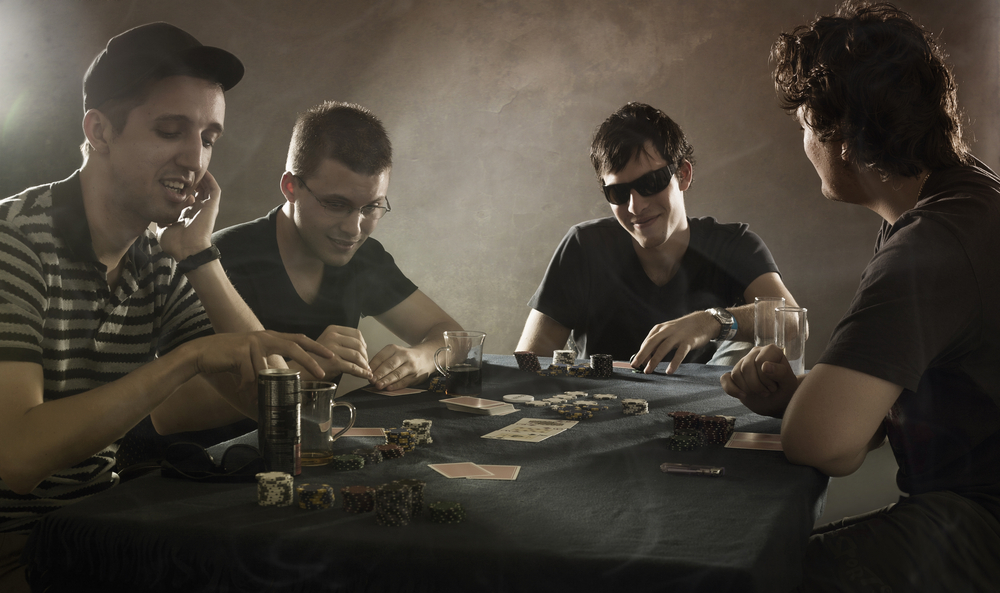When someone talks about card counting, the first thing that probably comes to your mind is people being removed from a blackjack table with a sheepish look on their face. While the card game strategy is used primarily in the blackjack family of casino games, it’s not uncommon for players to want to learn how to count cards in poker. Card counting is an effective strategy that can give players an edge over their opponents. Additionally, it allows gamers to bet more with less risk when the count gives an advantage and reduce losses during an unfavourable count. So what is counting cards and how can you use the strategy in poker? Read on to find out.

What is counting cards?
Counting cards, also known counting outs in poker, is a card strategy used to determine whether the next hand is likely to give an advantage to the dealer or to the player. Players use it in an attempt to decrease the house edge by keeping track of the cards that have been played. By keeping a running tally of the cards seen by players, the gamer can determine whether the cards in the deck are beneficial to them, and alter their strategy accordingly.
The History of Card Counting
This famous card counting strategy was created by Edward Thorp, a highly-respected mathematics professor, and author. He discovered that removing certain cards in a card game can be favourable to the player or the dealer. He then devised the card counting system and tested it in real life scenario. The strategy proved powerful and effective in helping players get better odds.
How to Count Cards
The general concept is identical to blackjack – keeping track of the ratio of low cards to high cards. Since high-value cards are more beneficial to the player and low-value cards benefit the dealer more than the player, it makes sense that a player would want to have more Aces and 10 value cards remaining in the shoe.
There are four steps in counting cards poker:
- Assign a point value to each card
- Keep a running count of the cards dealt
- Convert the running count to count per deck or “true count”
- Change the bets as the true count changes
Step 1: Assign A Value to Every Card
The first step in card counting is assigning a positive, negative or zero value to every card. For instance, with Hi-Lo, which is the most common card counting system, the values are as follows:
- 10, Jack, Queen, King or Ace = -1
- 7-9 = 0
- 2-6 = +1
When a card is dealt, you adjust the card’s counting number – either subtract 1, add 1, or do nothing based on each card’s value.
Step 2: The Running Count
Keep a running count by adding or subtracting each card that comes out of the shoe. Do this round after round and card after card until the dealer shuffles the cards again.
Step 3: Calculate A Count Per Deck or “True Count”
The running count has to be changed to a “true count” to know what your advantage is and to bet accordingly. To calculate the count per deck, divide the running count by the number of decks not seen. For example, if your running count is 6 and you have 3 decks remaining, your “true count” is 2 (6 ÷ 3). If your running count is -7 and you have 2 decks left to be dealt, your true count is -3 (-7 ÷ 2).
Step 4: Change Your Bets as The True Count Changes
While keeping a running count and a true count will help you know when the house edge is in your favour, not using the information to change your gameplay can mentally exhaust you during the game. To capitalize on the counting information, you need to raise your bets as the true count rises and lower the bets when the count is neutral or negative.
These steps apply to both online poker and poker played at land-based casinos. However, when playing online poker, you can program your computer to count cards optimally. It will never bet the wrong amount or mess up the count.
Cons of Card Counting
While counting cards can help you increase winnings and minimize losses, it has its own drawbacks. It takes time to master, it’s hard to actually count cards in a casino and you may get caught which may result in being being banned from the table games or from playing at the casino).

